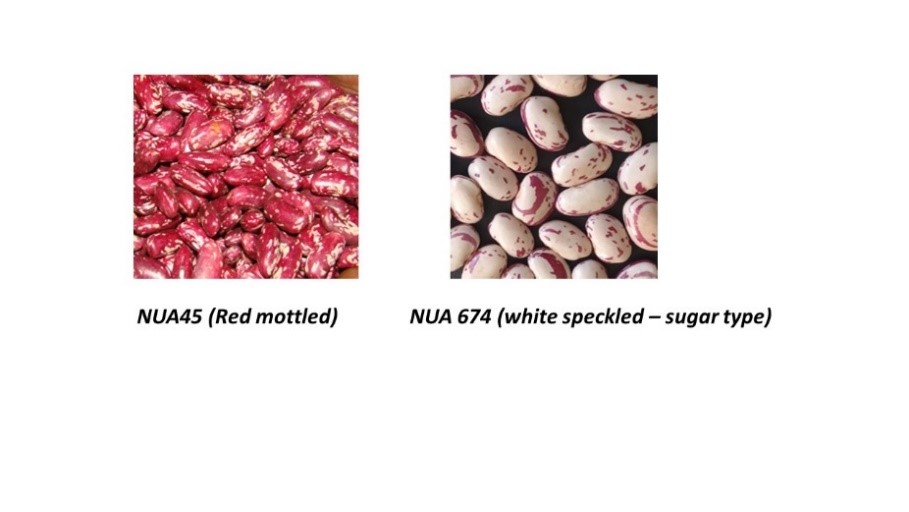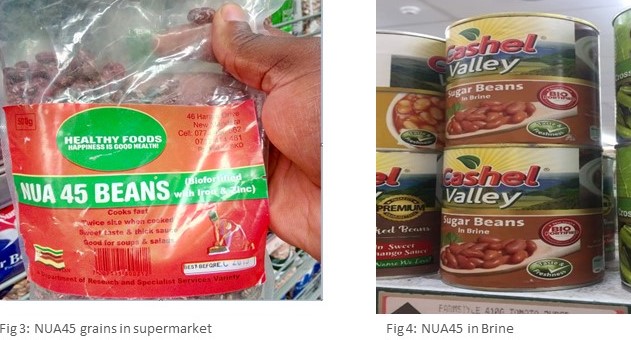Bruce Mutari, Patience Mashiri, Eileen Nchanji, Clare Mukankusi, and Patricia Onyango
Discussions on gender integration in conventional breeding are not new. These talks started in the 1980s when women farmers were integrated into on-station and on-farm breeding activities (Sperling, Loevinsohn, & Ntabomvura, 2008).
Currently, gender integration has shifted from mainly involving women and men farmers to include other value chain actors such as traders, processors, seed companies, aggregators, consumers, researchers, etc. The introduction of the demand-led breeding approach meant interrogating how we do breeding, finding out the gaps, and proposing the appropriate way forward. Different trainings have been carried out to explain this approach to breeders, social scientists, and other value chain actors.
This blog highlights how we are integrating gender in our breeding activities. It was developed with information collected during participatory varietal selection, especially those conducted for the different NUA bean varieties released. Information from stakeholder meetings with grain traders, seed companies, and processors was also used as additional information for the blog.
Common bean is considered a women’s crop especially in Zimbabwe, where more than 60% of women are involved in various nodes of the value chain from production up to consumption. Women primarily do the planting, weeding, harvesting, threshing, and winnowing while men actively take part in the sales of beans. The different roles of men and women are considered in breeding as they influence their trait preferences.
The Department of Research and Specialist Services (DR&SS) released its first biofortified bean cultivar, “NUA45” in 2010 to reduce the prevalence of malnutrition resulting from micronutrient deficiency in Zimbabwe. The release of NUA45 responded to the gap in Zimbabwe’s nutrition sector. There was little participation of women farmers and other value chain actors, during the selection process of the variety. This was the major reason for the NUA45 cultivar’s low adoption between 2010 to 2015. Most consumers were not attracted to the grain color, which was different from the usual sugar bean type. The grain was red mottled compared to the white speckled color farmers knew, as shown in Fig 1 from right to left. In addition, pod shattering increased drudgery for women farmers.
 Women farmers from Manicaland, Midlands, and Mashonaland central, the major bean growing regions in Zimbabwe were used to growing and cooking white speckled beans of the sugar market classes. On the other hand, male farmers were more concerned about the market value of the grain because the market had a preference for sugar bean type.
Women farmers from Manicaland, Midlands, and Mashonaland central, the major bean growing regions in Zimbabwe were used to growing and cooking white speckled beans of the sugar market classes. On the other hand, male farmers were more concerned about the market value of the grain because the market had a preference for sugar bean type.
To encourage the adoption of the NUA45 variety, various field days were organized to promote it. Different stakeholders especially women were invited to these meetings. Farmers were oriented on the attractive traits of NUA45, such as early maturity (75 – 80 days), palatability (good taste, sweet taste, fast cooking), grain size swells twice when cooked, and it produces a thick sweet soup.
The early maturity of NUA45 is an advantage to the farmers because of the reduced irrigation cycles needed in Nyanyadzi, Deure, and Nenhowe (Lowveld region of Zimbabwe), saving on the water and time spent on irrigation. The fast cooking trait of NUA45 is a huge attraction to women because they save on cooking time and fuel. The advantage in the less fuel usage meant that women’s health was not at risk due to smoke inhalation predisposing them to respiratory diseases.
Even though NUA45 has these great attributes, its biggest challenge is its susceptibility to diseases (new races of pathogens had broken down genetic resistance), pod shattering, and the difficulty in marketing (selling) due to the unfamiliar grain color. Climate change and weather variability could have resulted in the evolution of new races of pathogens that broke down genetic resistance because the cultivar (NUA45) exhibited good levels of tolerance to diseases of economic importance when it was released in 2010.
The beans pod-shattering meant that women; who usually cultivate beans were spending more time picking the grains from the ground during harvest. In most instances, not all grains are picked, resulting in harvest losses. Farmers were also spending more on purchasing fungicides to manage pests and diseases, thus reducing profit margins. Even though women had indicated that NUA45 was highly palatable, difficulties in marketing this cultivar forced farmers to keep the harvest for household consumption, which was a good source of nutritious food for the family but not necessarily great for income.
Despite some of these good attributes of NUA45, various actors in the bean value chain (farmers, traders, seed companies, processors, consumers) requested DR&SS to release a biofortified bean cultivar of the sugar market class that would be easy to sell but retain the attributes of the red mottle NUA45 and improve on pod shattering and the disease susceptibility.
In 2018, DR&SS released “NUA674”- a biofortified bean cultivar of the sugar market class that is high yielding about 3.5 ton per hectare, resistant to pest and diseases, without pod shattering, addressing the preferences of various actors in the bean value chain especially women smallholder farmers. Compared to NUA45, The main setbacks with NUA674 are its extended maturity period (about 90 days) and slow cooking. Surprisingly, women smallholder farmers in the Mutasa region accepted NUA674 because of its grain color, tolerance to pod shattering and diseases (reducing costs on fungicides and application time), Their male counterpart accepted variety as it was preferred in the market.
A 2018 impact assessment study conducted in Zimbabwe revealed that the adoption of NUA45 had improved significantly (29%) due to the government’s push for food fortification. This national policy passed in 2015, mandated the Zimbabwean food industry to fortify food products in the country. This policy coupled with intense awareness creation campaigns raised the demand for NUA45 significantly in Zimbabwe. For example, Cairns Foods Limited is now processing NUA45 beans in brine as a canned/tinned ready-to-eat product for consumers.
Between the two varieties, NUA45 is better for canning compared to NUA674 thus Cairns Foods Limited is still canning NUA45. Healthy Foods, a woman-owned company, sells NUA45 grains and flour in Zimbabwe’s main supermarkets.
In conclusion, breeding priorities should put into consideration several factors. Information on the varietal and trait preferences among men and women farmers is not enough. Other value chain actors should equally be included in the trait and varietal preferences sharing to guide on possible varietal replacement strategies and specific product profiles. Country breeding targets and strategies should be specific and geared towards addressing household food and nutrition security, income generation, gender equality, etc. PABRA together with partners is piloting a gender-responsive product profile tool with the bean research team in Zimbabwe, and preliminary results will be shared soon.
This article was first published by Agrilinks


